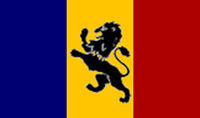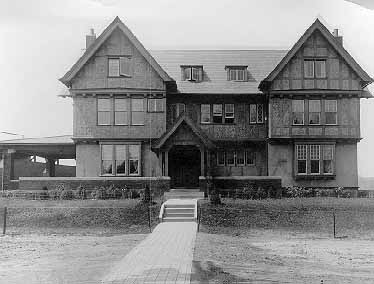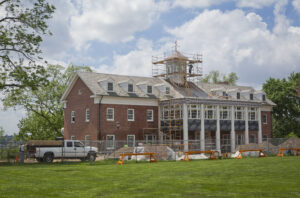The first chapter of DKE was founded in 1844. This chapter, denoted Phi, is the only fraternity at Yale never to go inactive. Within three years of the founding at Yale, chapters were started at Bowdoin, Princeton, Colby College, and Amherst College.
Since that time, DKE has grown to over 64 chapters and has initiated over 85,000 mem bers across North America. Delta Kappa Epsilon became an international fraternity with the addition of the Alpha Phi chapter in 1898 at the University of Toronto, Canada.
bers across North America. Delta Kappa Epsilon became an international fraternity with the addition of the Alpha Phi chapter in 1898 at the University of Toronto, Canada.
Delta Kappa Epsilon administers a charitable organization called the Rampant Lion Foundation. DKE has championed an organization call ROAR (Restore Our Associational Rights), which campaigns for the freedom of fraternities and Greek organizations in general to operate without interference and discrimination from university administrations or others.
Dekes in American History
During the Civil War, the first Union officer killed in battle (and, so far as records show, the first soldier to give his life on either side) was a Deke, Theodore Winthrop of Phi. Six weeks after Lee’s surrender at Appomattox, Philip Spence of Zeta commanded Confederate troops in their last organized battle of the war. In total, 725 Dekes fought for the South and 817 for the North.
In the election of 1876, the Republican Party chose between two Dekes, nominating Hayes rather than rival and fellow Deke James G. Blaine, who later authored the Fourteenth Amendment.
During the Spanish-American War, the first American officer to be killed was a Deke, John B. Gibbs of Rutgers. Another Deke, Senator Henry Cabot Lodge of Alpha, proposed that the Spanish offer of surrender be accepted. Also, one of the negotiators of the ensuing peace treaty was a Deke, Whitelaw Reid of Kappa.
The first American to lose his life in World War I was Paul G. Osborn, a Dartmouth Deke. Jimmy Hawes, with the assistance of the Chief of Staff General Peyton C. March, a Rho Deke, established in Paris a DKE Club to provide a welcome to Dekes back from the frontlines.
In WWII, more than 6,000 Dekes served in the armed forces of the United States and Canada, and over 300 gave their lives.
DKE Insignia
In 1844 the fifteen founders of DKE set to work devising all the secrets that are still in exis tence today. They crafted the pin and secret grip, along with the secret and open greek mottos. The open motto is “Kerothen Philoi Aei,” meaning “Friends from the Heart Forever.”
tence today. They crafted the pin and secret grip, along with the secret and open greek mottos. The open motto is “Kerothen Philoi Aei,” meaning “Friends from the Heart Forever.”
The DKE pin shows the Greek letters ΔKE on a white scroll upon a black diamond with gold rope trim and a star in each corner. Each brother is given this pin, along with a personalized scroll that marks official membership, after he has been initiated into the fraternity.
DKE’s heraldic colours are gules, azure, and or (crimson, blue, and gold), and the flag is a triband of those colors with a black left-facing rampant lion in the middle. This flag was planted at the North Pole by the first man there, a Deke named Robert Peary of Theta chapter. The flag was also brought to the moon by Brother Alan Bean of Omega Chi chapter.
Rho History
In the early fall of 1855, Lafayette sent a delegation to Phi Chapter at Yale which was well received and resulted in a charter being granted to Lafayette for the Rho Chapter in October 15 of that year. For many years Rho Chapter’s meetings were held at midnight on or near the Lafayette campus. Members crept out of their rooms at 11:30pm and quietly made their way to rendezvous, ducking into darkened doorways when they heard footsteps. The locations of the chapter meetings were conveyed by a cryptic set of symbols, boldly and publicly displayed on campus, which, however, only Dekes were able to interpret.
In the fall of 1857 the Lafayette Faculty attempted to abolish fraternities by requiring every student to take a solemn obligation not to join a secret society. However, Brother Joseph Barret, ’61, on account of ill health was forced to leave the college in the spring of 1857, but returned one year later. During his absence the Faculty restrictions had gone into effect, but did not affect him. He was free to wear the badge of DKE, and had the exceptional honor of being the only man in Lafayette who could wear the badge of his fraternity. The Faculty and Trustees withdrew the ban around 1870 when they realized it was ineffective.
After the end of college opposition to fraternities, Rho Chapter of Delta Kappa Epsilon obtained the first fraternity chapter house at Lafayette in 1896. The Rho Chapter expanded, and soon needed a larger house. Construction on the second house began in 1903 and was completed in 1904, just in time for Rho’s fiftieth anniversary at Lafayette College. This Chapter House (pictured below) was located across from present day Skillman Library.


Second Rho Chapter House, 1903
On December 3, 1959 the Chapter House was ravaged by fire, weakening the structure beyond repair. Three years later in 1962, the present DKE Rho House on March Field was completed. It has been occupied continuously since 1962.
In 2015, the college and alumni brought forth a massive renovation to the house. The renovation added a new addition to the front of the house, “The Solarium”, as well as updated the kitchen, dining room, living room and more.

